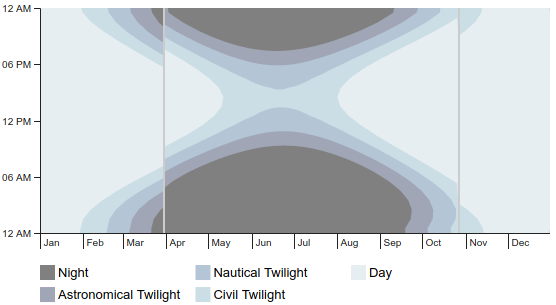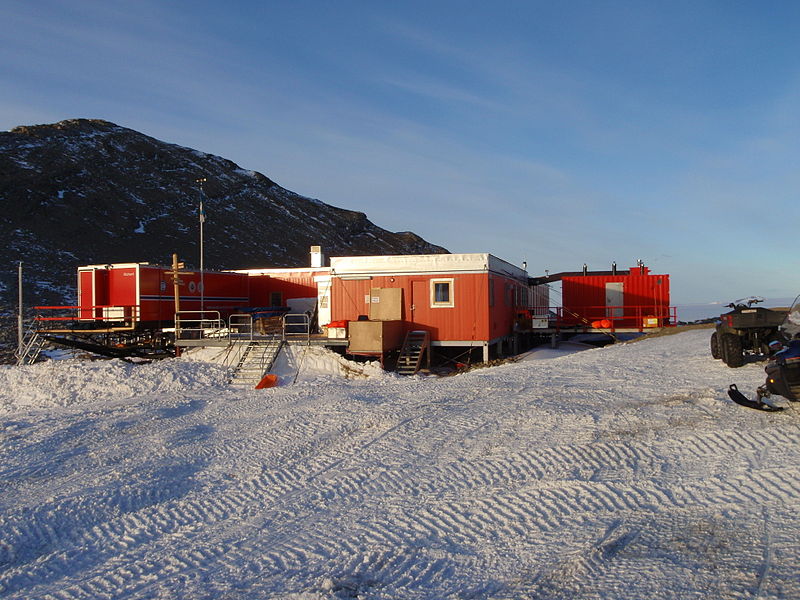Eternal Sunshine
Today is one of my least favorite days of the year. In most jurisdictions across Canada, March 10th is the start of Daylight Savings Time (DST). That means that one hour of sleep was taken from me in exchange for an extra hour of daylight in the evening. I did not agree to this trade.
I have been thinking recently about the effect that changing daylight hours through the year has on people living at extreme latitudes. Just ask anyone from Anchorage or Oslo — long winter nights and endless summer days contribute immensely to the identity of a place.
These thoughts ended up as manifesting as a project I have been working on during dark evenings this winter, a Javascript visualization of the phases of sunlight for locations across the globe.

Trolling
The Troll Antarctic research station produces one of the most dramatic daylight charts. According to Wikipedia, the Troll station was established in 1990 and is built on a slope of solid rock instead of snow pack, which is unique among most research stations on the continent (sounds nice).


Troll caused me quite a bit of trouble and debugging time because of its abnormal two hour Daylight Saving Time change. According to a footnote to the Time in Antarctica Wikipedia page there is an (somewhat) rational reason for this:
The time zone where Troll is located, UTC+0, is 1 hours behind Norwegian time”. Contacts with the Norwegian Polar Institute has revealed that they use UTC+2 (Norwegian DST) during the dark winter, for communication simplicity, since no airplanes fly anyway then.
Wrap-up & Acknowledgments
This project was directly inspired by two sources, the excellent daylight charts from timeanddate.com and an interactive map of the world from the landing page of Moment Timezone. I think that linking the two adds something useful, but this project is at its core a reimplentation and combination of those two sources.
If you have any ideas for improvements or want to see how it works, all the source code is on Github.